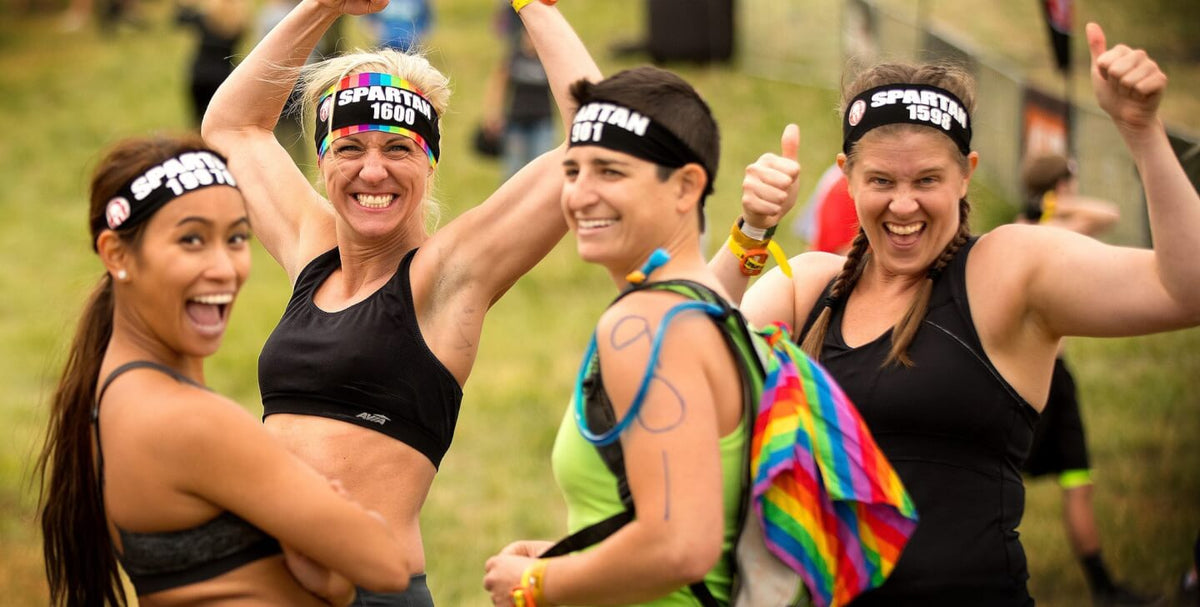5 Essential Steps for Women Starting Endurance Racing

Ana Dutra could barely swim across a pool when a friend suggested they sign up for a triathlon. “I had not swam since I was a child,” she says, “but I decided to train anyway.”
Her first event consisted of a 750-yard swim, 12-mile bike race, and a 3-mile run. “I finished with a big smile on my face and a feeling of power that was hard to describe. I was hooked.” A couple of months later, she raced her first Olympic-distance triathlon and, a few months after that, her first half Ironman.”
Since then, the 52-year old author and CEO of the Executives’ Club of Chicago has completed more than 20 triathlons—including six half Ironmans—and has run the Chicago Marathon for the past six years.
Dutra is one of a growing number of women now entering traditionally male-centered endurance racing. In America, roughly 45 percent of marathon runners are women, and a third of ultrarunners are female, according to Ultrarunning Magazine.
Two decades ago? Different story. Before 1971 women couldn’t line up for the world’s longest-held marathon in Boston, and it was only in 1984 that female marathoners could compete in the Olympics. As for ultrarunning, as late as the 1990s, the male to female ratio was approximately 85 to 15 percent.
And while obstacle course racing is still the new kid on the block in the endurance race game, it was still dominated by males until recently. Carrie Connors, founder of female-centric social media network Spartan Chicked, says she started the platform in 2011 because female representation in U.S. Spartan races was only around 10 percent.
Today, women stand shoulder-to-shoulder with men across all endurance sports. What can beginners do to ensure they get up to speed as quickly as possible? Here are five steps every woman should take.
Step 1: Repeat After Us … “I Can”
There were many reasons why women were excluded from certain sports, but all of them perpetuated the same myth: Women can’t.
When women are sidelined in sports, they grow up “with a sense of limitation,” says Kathrine Switzer, who made history in 1967 as the first female numbered entry to run the male-only Boston marathon. When the oversight was clocked by officials on the course, they tried to physically oust her midrace. Alarmed, Switzer kept running.
“I thought, ‘No, no, if I quit, everybody’s going to believe women can’t do this,’” she recalls.
Since then Switzer has become an advocate for equality in sport. She was central to both the Boston marathon and the Olympics’ about-face on female participation, and has set up a nonprofit organization 261 Fearless (261 was her bib number in that first Boston marathon), which uses running as a vehicle to empower and unite women globally.
“Now, when women compete in endurance running, they do so with a sense of huge accomplishment,” she says. “This leads to empowerment in all aspects of their lives. They realize they can do anything and it really is very transformational.”
Step 2: Lace Up Your Shoes
The simple act of putting on your running shoes, Switzer says, is the first step toward your big goal. “Don’t think. Just put on your shoes and go,” she suggests. “The body wants to move, and you are never too old, inexperienced, slow, big, or whatever you think you are to start.”
Switzer ran the Boston marathon this year at the age of 70 to commemorate the 50-year anniversary of her first race. It was her ninth Boston marathon and her fortieth marathon in total.
Step 3: Be the Tortoise, Not the Hare
Don’t worry if you’re not built for speed, either. Switzer claims it’s okay to be the slowpoke at the start line as this saves energy. “Women are naturally suited for endurance events,” she says, and research backs her up.
A comprehensive Danish study examined 131 marathon results from 2008 to 2014, and found that women are better than men at pacing themselves during long-distance running events. Rather than tearing off like the proverbial hare and then burning out, women, the study says, are 19 percent better than men at hoofing along at a controlled and consistent pace at the beginning and end.
Dutra agrees. “I’m slow and I know that I will likely finish at the end of the pack. But if I push myself too hard in the beginning, I will not finish at all. I’ve seen people go all out from the start line and then can’t complete the race.
“Patience, persistence, and consistency are key requirements for endurance athletes,” Dutra says.
Step 4: Embrace the Gender Obstacle
Don’t be bowed by traditional barriers, says Ella Brogan, athlete development manager at Ironman.
“Woman often struggle to justify time away from their children and partners,” Brogan says. “There is a lot of guilt associated with taking time out for themselves to train and race. Yet, many of our female competitors who are mothers speak about the importance of recognizing the worth of self-empowerment that comes with achieving your goals. They feel they are better mothers because of it.”
Still, from a practical point of view, if you’re a newbie, how do you fit in training between work and family duties? Connors suggests checking out workouts of the day from an organization affiliated to your sport. She always recommends the Spartan WOD to Chicked members, she says, because “it takes the guesswork out of what to do, and it varies day to day so it’s always fun and challenging.”
You can also get your sweat on in the comfort of your own home. “Then the workout becomes part of your life,” Connors says, “as opposed to trying to force it between kid’s soccer or baseball games, work events, fundraisers, or whatever else you already have on your plate.”
Step 5: Find Your Tribe
The final step is also one of the most important in ensuring longevity in the game: Find a gal pal to prep for races with, or join a racing group.
“I started Spartan Chicked,” says Connors, “because I strongly felt that if we created a movement for women by women that allowed us to connect and support one another, it would drive more women to Spartan races.”
She was right. Within a couple of years, female participation increased to 32 to 40 percent of participants, depending on the market.
Ironman has also been working hard in recent years to create a community that welcomes women. In 2015, the average global female participation rate in Ironman events was 20 percent. With the organization’s Women for Tri initiative, which includes more female race commentators, pre-race female group training, and seeding pro women ahead of men, they’re aiming to increase that to 50 percent.
“Awareness is the key to increasing the number of women participating in triathlon,” says Brogan. She suggests this is also where individual women can step up and over barriers. “The female audience is very powerful once we join together, be it for training, racing, or inspiring one another.”
Daily workouts delivered right to your inbox. Sign up for the Spartan Workout of the Day




